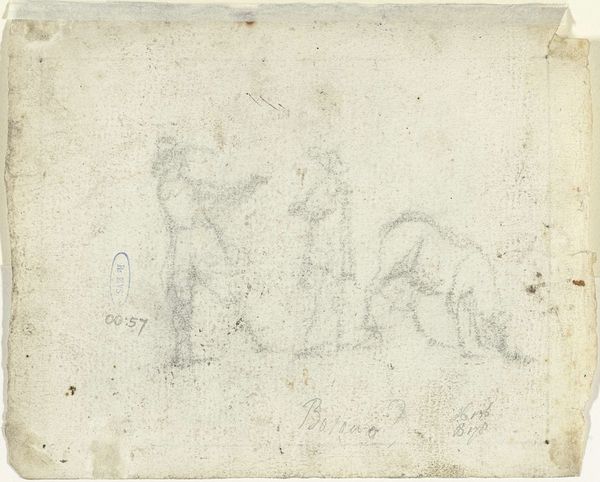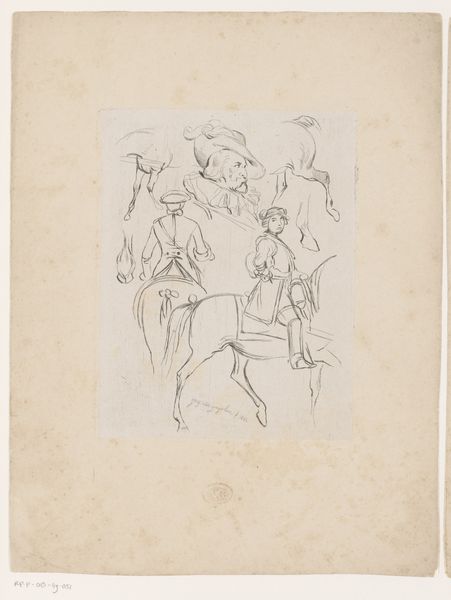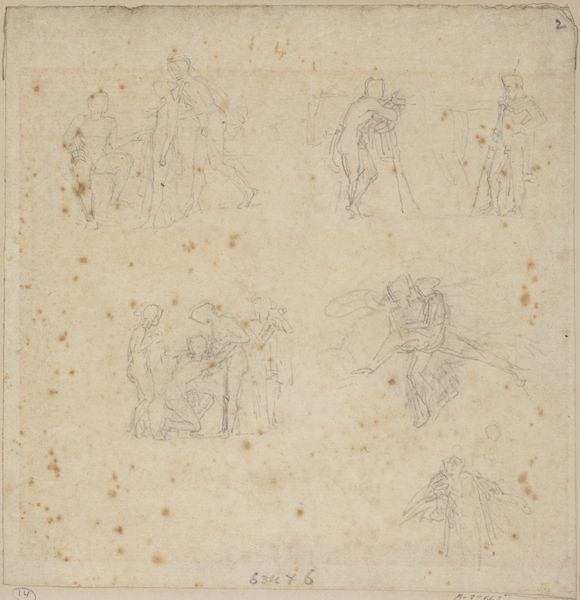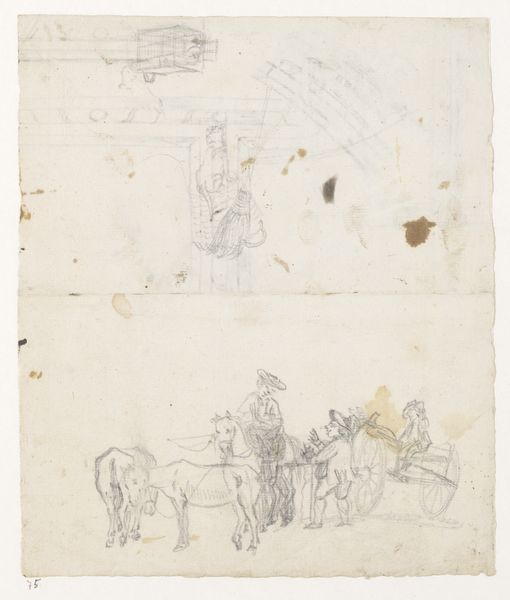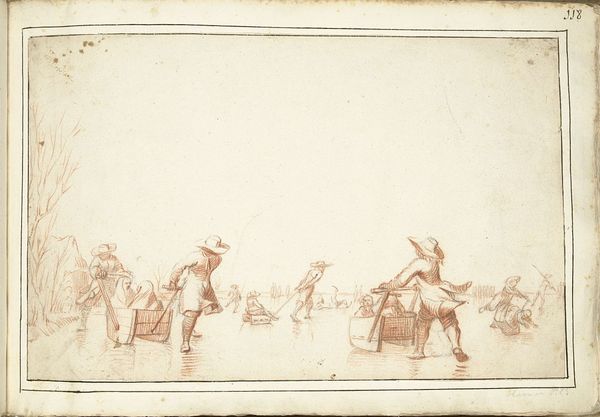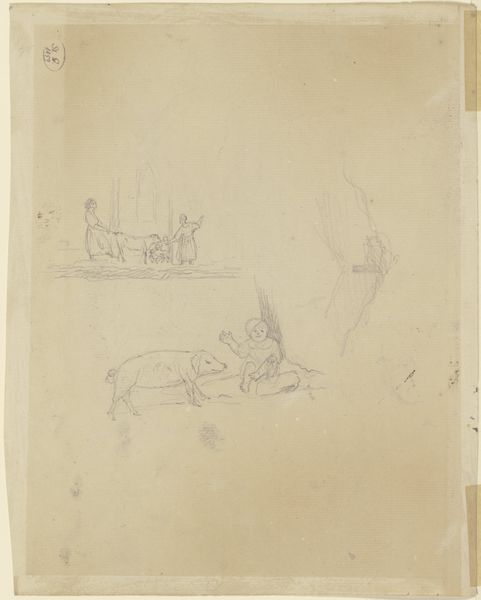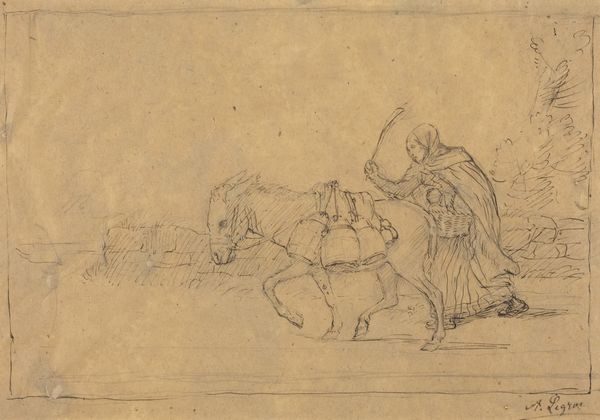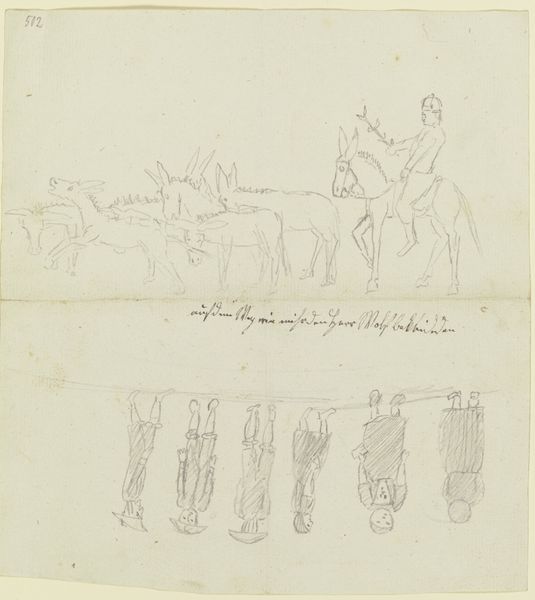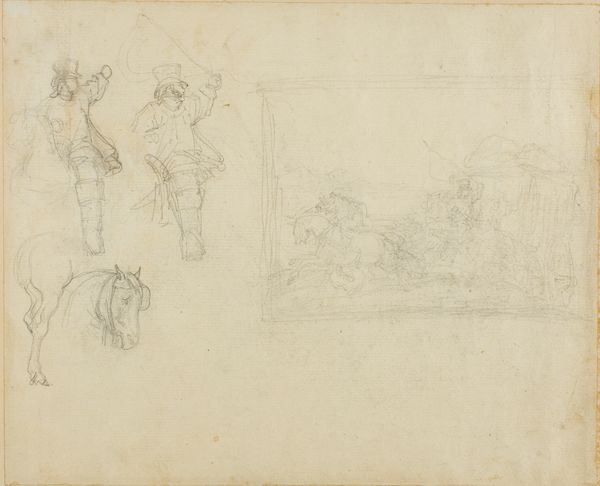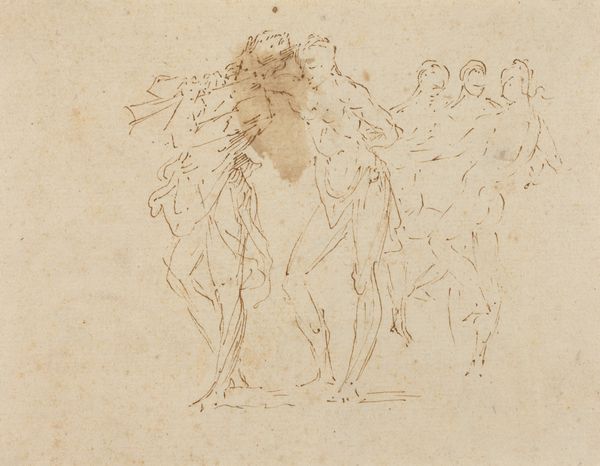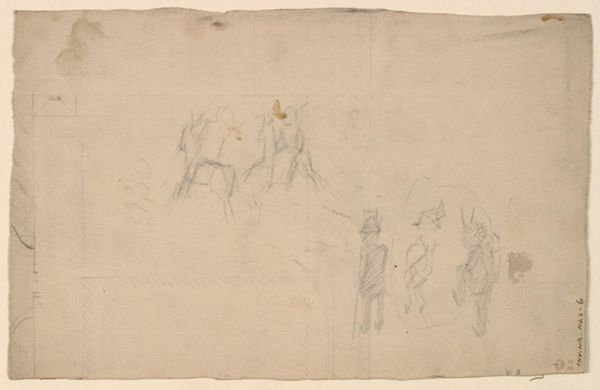
Flere rids af en siddende figur og af en figur til hest 1810 - 1833
0:00
0:00
drawing, pencil
#
drawing
#
landscape
#
figuration
#
romanticism
#
pencil
Dimensions: 81 mm (height) x 80 mm (width) (bladmaal)
Curator: Welcome. Today, we’re looking at a work by Christen Købke, titled "Flere rids af en siddende figur og af en figur til hest"—translated, "Several sketches of a seated figure and of a figure on horseback." It's a pencil drawing, created sometime between 1810 and 1833. Editor: My first thought is that it feels so immediate. The lines are faint, the figures are quickly rendered... you sense the artist capturing a fleeting moment. The texture of the paper, that rough quality, also gives a sort of humbleness. Curator: Absolutely. Consider that this drawing emerges within the Danish Golden Age, a time of national romanticism. The focus was on everyday life and local landscapes. This drawing can also offer an insight into a broader historical context such as daily life, military culture and social gatherings, where horses played a prominent role. Editor: Right. It really pulls back the curtain on artistic practice. Pencil drawings such as these are quite useful, in showing the method and raw material used to create a piece, without idealization. This speaks volumes about his working methods and possibly his understanding of craft and skill. The quickly applied thin pencil shows all of this in its materiality. Curator: Precisely. Think about the institutional context. Museums today want to present a more transparent view of artistic creation. Showing the rough sketches reveals a lot about the production of paintings at the time, giving a deeper meaning than a polished finished piece would suggest on its own. Editor: It’s interesting how such simple materials and composition can evoke so much thought about production. This offers a raw, almost anti-monumental glimpse into a time when art often focused on grand narratives. Curator: Indeed. By exhibiting sketches like this, the museum is implicitly challenging the traditional hierarchy between finished artwork and preparatory study. It makes art history more accessible. Editor: This piece serves as an accessible representation, as art in itself is a kind of labour. Its open simplicity evokes ideas, even now. Curator: Very well said. Hopefully, this gave you a more intimate appreciation for the artistic approach behind this pencil drawing. Editor: I hope our listeners now see art in raw materials, but beyond mere artistic expressions or refined craft. Thank you.
Comments
No comments
Be the first to comment and join the conversation on the ultimate creative platform.
